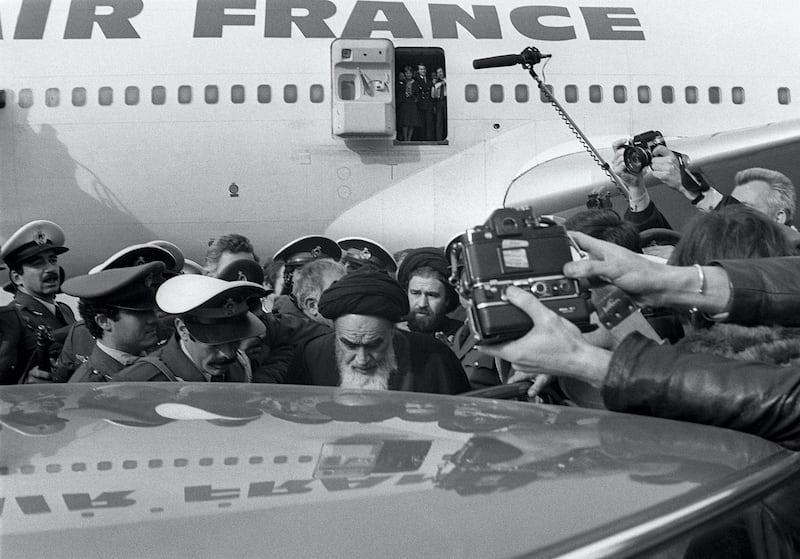This Friday, 40 years ago, an Air France plane touched down in Tehran, and a white-bearded, black-robed figure was met by rapturous crowds of millions.
Ayatollah Khomeini had returned, the Shah was gone, and the last remnants of his regime would be swept away ten days later. After four decades, the Middle East’s oil landscape is still overshadowed by those tumultuous days.
Oil funded Mohammad Reza Pahlavi’s authoritarian modernisation and centralisation. He was a price hawk within Opec, helping to push prices from $1.80 per barrel in 1970 to $11.58 in 1974, the equivalent of $53 today. And yet, the country did not participate in the 1973-4 Arab oil embargo on the US because of its support of Israel in the 1973 war against Arab states. Instead it became the fourth-largest producer in the world in 1977, after the Soviet Union, the US and Saudi Arabia, reaching 5.7 million barrels per day, a level never approached since.
The Shah lavished money on advanced weaponry for the military, and on grandiose industrial projects, intending to reach German standards of living within a decade. With Iran’s reserves seeming limited, there were ambitious plans to inject gas to sustain oil output, to export gas to the Soviet Union and Europe, and to introduce nuclear power. Diagnosed with cancer in 1974, and with his oldest son Reza only 17 when he went to the US in 1977 for air-force training, the Shah was a man in a hurry, seeking to haul his country into the front rank of world powers.
The sudden wealth tempted him to undercut almost all the possible sources of support for his regime: the traditional landowners, the “bazaari” merchants, the religious conservatives, liberals and students. Land reform and the oil boom fuelled the influx of peasants into the cities, becoming the “mostazafin” underclass, the foot soldiers of the revolution. He was left with a narrow circle of technocrats, crony capitalists, the corruptly enriched royal family, and the security forces.
The volatility of the petroleum markets undermined the Iranian economy. After years of easy money fuelling Iranian industrialisation, inflation and social transformation, the landscape began to change as other Opec producers hiked production in December 1976. Hopes of ever-rising prices faded, and the Shah had to cut back spending sharply, leading to soaring unemployment.
Large protests broke out in January 1978 against insults to Khomeini, who was then living in exile in Iraq. When oil workers went on strike in October, the country’s economic foundation was undermined, the Shah’s fate sealed. On 16th January 1979, he left the country forever, and Khomeini returned sixteen days later.
Oil prices had already soared on the disruption caused by the revolution; they rose again when Saddam Hussein’s Iraq invaded in September 1980, hoping to seize the province of Khuzestan, Iran’s oil heartland. Both sides bombed oil-fields and refineries, and Iran’s ally, Syria, closed the Iraqi pipeline through its territory, cutting off most of its exports.
Between 1984 and 1988, Iraqi attacks on ships serving Iranian ports, and Iranian retaliation, led to the “Tanker War”, with damage to many vessels but no halt of exports from the Gulf. While protecting reflagged tankers serving neutral ports, the US destroyed several Iranian offshore oil platforms.
Prices soared at the beginning of the war, leading to a deep economic slump in the industrialised economies, which were only staggering back from the stagflation caused by the 1973-4 first oil shock.
But the second oil shock gave renewed impetus to the developed countries’ countershock. New oil fields were developed in the North Sea, Alaska and Mexico. Fuel-efficient vehicles were introduced, there was a turn to nuclear energy, and the first steps were taken in modern wind and solar power, which are now blossoming. World demand did not recover to its 1979 level until 1994, and in 1986, the oil price collapsed. Ebbing revenues helped force Khomeini to “drink from the poisoned chalice”, as he put it, and negotiate a ceasefire with Iraq in 1988.
The Iranian petroleum industry has never fully recovered from the combination of war damage with the chaotic post-Revolution brain drain and the exodus of international staff, nationalisation of foreign oil assets, and repeated waves of US sanctions. What was once the Middle East’s technically most advanced oil sector, a pioneer of gas injection, computer reservoir modelling and 3D seismic, still lags well behind Saudi Aramco and its other regional competitors. On Tuesday, oil minister Bijan Zanganeh admitted, “Many of our old units are in fact operating museums.”
International oil companies did not return until 1998, and their involvement has been marginal because of US pressure and difficult Iranian negotiating positions. Iran, though, has managed to become the world’s third largest gas producer, mostly under its own efforts.
Saddam Hussein, weighed down by war debt and the post-conflict slump in oil prices, made the fateful decision to invade Kuwait in 1990, wrecking Iraq’s own oil sector and economy under a decade of harsh sanctions followed by invasion and civil war. Not until 2015, with an influx of international investment, did Iraq surpass its 1979 production high.
The global energy industry absorbed the shocks of the revolution, and emerged better and stronger. Regional politics, though, continue to be poisoned by the flawed rule of the Shah, his overthrow, Saddam Hussein’s aggression and the temptations of black gold. It is not impossible, but it is difficult, to escape the shackles of history.
Robin M. Mills is CEO of Qamar Energy, and author of The Myth of the Oil Crisis







